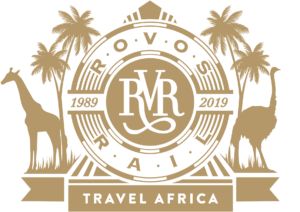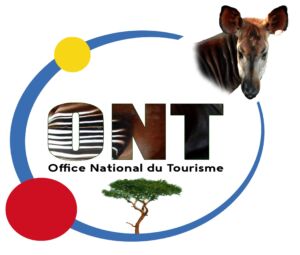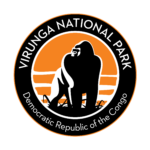Likasi (formerly Jadotville) is a town in the province of Haut-Katanga in the Democratic Republic of Congo. Likasi is located in the heart of the Katanga mining region, close to the Mitumba and Kundelungu mountains. The current population is over 430,000. It is a mining center and an important communication hub.
Nicknamed the City of Lights, Likasi (name derived from dikashi, “good smells”) is a tourist town. In 1931, the agglomeration of Likasi was named Jadotville, in honor of the engineer Jean Jadot. Its motto is Aere laboreque (Latin): by copper and work. The Likasi copper processing plant is running at full capacity. The Democratic Republic of Congo extracts 500,000 tonnes of copper per year, making it the world’s fifth largest producer. The city has a rich mineralogical museum with a collection of 600 stone samples.
The Mwadingusha hydroelectric dam located on the Lufira 75 km away provides electricity to the city. Lake Tshangalele, tourist site of the city, is a 410 km2 reservoir on the Lufira near Kapolowe, 25 km from Likasi on the road to Lubumbashi. Located on the plateau of Haut-Katanga, Likasi has a mild tropical climate. The average temperature is 20°C. The dry season begins in April and experiences the coldest period around June. In November, the rainy season begins and ends in March or April. December is the rainiest month and July the driest. Precipitation depends on the relief and the humid north-east trade winds but is mainly due to the north-west winds coming from the central basin of the Congo River during the rainy season. The dry season lasts almost six months, from May to October with a total absence of rain. During the wet season, heavy rains of varying duration, averaging 176.2 mm, fall about every other day.
The city is full of hills; hence the name Likasi ya Bilima, Likasi of the hills; with an average altitude of 1,265 m and isohypses at 1,100 and 1,400 m. Its highest point, Karajipopo in the commune of Panda, is at 1,427 m. It is 120 km by road and 132 km by rail from Lubumbashi and 502 km from Kamina, the distribution center of the Congo railway network. Likasi is at the center of Kambove territory.
Likasi, located 78 km from the ancient capital of King Msiri, has been a copper center for centuries, the inhabitants of the region, Sanga and Kaonde called “Copper Eaters”, used clay ovens, leather bellows of antelope to smelt the crushed malachite, extract the copper and shape it. These Sanga and Kaonde metallurgists had the slogan “Let’s go eat copper” at the beginning of each dry season, each time they retired to the bush far from the eyes of women and young children to cast copper ingots and crosses from the twelfth century.
In 1913 the project began to install a metallurgical center near the open pit mines of Likasi and Shituru, but the beginning of the First World War upset the investment program of the UMHK by cutting it off from its metropolitan suppliers.
The ordinance of May 23, 1917 granted Likasi-Panda the status of urban constituency. In June 1921 the Panda gravity concentrator was put into operation. An electric smelter started production in 1924 producing cobalt-bearing alloy and in 1929 the Shituru works were opened with a capacity of 30,000 tons of electrolytic copper.
The city was renamed Jadotville by the Belgian colonial administration in 19313, and on December 21, 1943 it was erected to the administrative status of a city. Jadotville was the third city after Léopoldville (Kinshasa) and Élisabethville (Lubumbashi). She resumed the name of Likasi on October 27, 1971.
During the colonial period, many Kasaians, Rhodesians, Malawians and other Rwandans and Burundians were brought to Katanga, especially to Likasi, to work in the mines.
In 1961, during the Congolese crisis, an Irish company member of the United Nations Operation in the Congo was taken prisoner by the Katangese army after the siege of Jadotville.
In 1992, the separatist policy of a predominantly monethnic political party in the province provoked a massive departure of Kasaian nationals with the complicity of the central power, which lacked positioning and wanted to pull the rug out from under the political opposition led by a Kasai national.
At the end of 2007, several trucks loaded with radioactive minerals from Kolwezi were intercepted near Likasi. One truck drove towards Shinkolobwe and then dumped its load into the Mura River on the grounds that the road and bridges leading to Shinkolobwe were impassable. In November 2007, the city’s drinking water was contaminated because the waters of the Mura and Panda rivers were polluted with radioactive uranium ores from uranium mines.
Even today, Likasi lives above all from the mining industry (copper, uranium, cobalt, etc.). But after more than 40 years of dictatorship, mismanagement and corruption, the miners work in appalling conditions. Some mines are now guarded by the presidential guard of honorary president Joseph Kabila, against payment of “artisanal miners” who resell their copper clandestinely.The governor of Katanga Moise Katumbi Chapwe is committed to supporting artisanal diggers, against multinational firms. He nevertheless forced the multinationals to cultivate hectares of maize to feed the region.
Itinerary:
We will leave around 7 am and drive for about 3 hours to Likasi. We will visit all the most important sites in town and have a local lunch. We will drive back in the late afternoon to Lubumbashi















